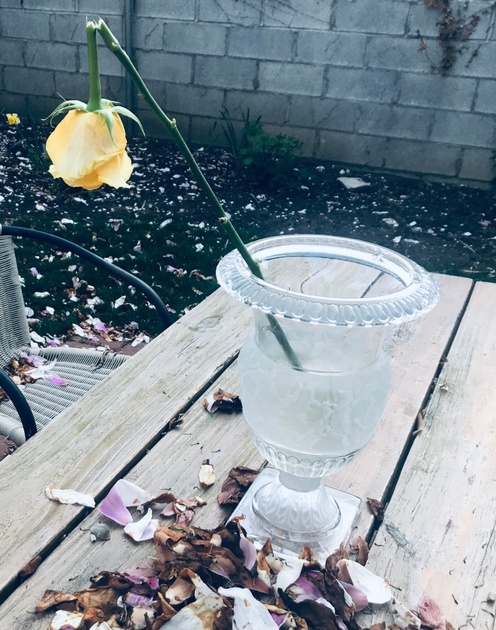
Trauma takes many forms. Many people are blocked from living life as their best Selves due to past or present traumatic experiences. Some people don't even recognize that their experiences have traumatized them and are the cause of difficulties in how they respond to life's stressors including their relationships. Traumatic events are frightening and often the terror resides in survivors long after the trauma is over. Trauma shakes one up and is a source of physical or emotional pain. It can affect the way a person parents their children or interacts with their spouse. It colors the way a person experiences life, the big things and the small things. Trauma causes immense stress, such as intense emotional reactions, hence the diagnosis of Post Traumatic Stress Disorder (PTSD).
Most people think of trauma as abuse or catastrophic experiences, however trauma can come from subtle disruptive interpersonal experiences:
Financial Abuse
Financial abuse and exploitation can be someone manipulating you to give them money, through guilt, or threatening to hurt you or your family if you don’t give in to their demands. This can be done by strangers as well as people you thought were friends or others in your life who previously seemed well meaning, kind and helpful. My professional experience includes Psychics who have manipulated intelligent and educated people out of large sums of money over a period of years by predicting that terrible calamities will befall them and their family if they didn’t pay the demanded sums, preying on natural superstitious fears. Family members can “borrow” money on a regular basis and don’t keep their commitments to repay these “loans”. There are also medical and mental health professionals who exert pressure on people who are physically or emotionally vulnerable to spend exorbitant amounts of money on treatment. The effects of such experiences, aside from great financial losses, can be feeling psychologically invaded and violated, all feelings that happen with other types of trauma such as physical and sexual abuse.
Religious and Spiritual Abuse
Religious and spiritual abuse can be parents, teachers and sometimes Rabbi’s who use concepts of G-d and Torah as weapons of force to frighten children (and adults too) into behaving according to their self-defined religious standards via threats of punishments in this world or the next. Religious and spiritual abuse also includes authority figures shaming, humiliating, even using physical and verbal abuse with children as well as adults. In our society, using G-d and religion to hurt another person just causes trauma and rebellion, and most likely does not yield even superficial compliance.
A Different Kind of Sexual Abuse
An example of sexual trauma that many people don’t recognize as such is the shame that many adults carry with them from childhood when they were shamed, punished and even physically beaten after engaging in body exploration. Slut-shaming may be a term more often used in the secular world but it is certainly enacted, possibly even more rampant, in the most religiously pious of families and communities. The resulting trauma of such shame and punishment affects a person’s sense of Self, sexual identity and ability to have healthy sexual experiences within marriage.
Another example of sexual trauma is depicted in the acclaimed Netflix show called ‘UnOrthodox’. The protagonist Esti is traumatized by how her mother-in-law shows up unannounced during Sheva Brachos and accuses her of not cooperating with consummating the marriage. The actual distress she feels when trying the first three nights of her marriage seems less traumatic than her mother-in-law's invasion of her privacy and utterly non-compassionate demands that she be sexual. Esti’s mother-in-law tells her that her son is “the King” and must be treated as such. Instead of showing compassion and empathy toward her newly married daughter in law who is frightened and experiences extreme physical pain in “trying”, she instructs her to “look at the directions” on a lubrication product that would help achieve the goal and then struts out of the apartment leaving Esti confounded, hurt at the violation of her privacy and betrayed by her husband who called his mother from the street to complain. Esti is further traumatized by the desperate follow up session she has with her Kallah teacher who curtly and without any emotional attunement toward Esti’s confusion about her body being invaded in this painful way, diagnoses her with vaginismus and hands her a dilator device for “exercises”. There is no guidance about how to make the wedding night a positive sexual and intimate experience . No one asks her about the pain she experiences during attempted intercourse. No one seems to notice that the source of her problem is that neither she nor her husband are knowledgeable enough to understand the importance of foreplay and the physical necessity of arousal. Having sex without arousal for many young kallahs is like stuffing hard raw steak down the throat of a child who doesn't know how to chew or swallow. Esti is simply objectified as a vessel for her husband and a means to bear him children. Esti goes to her Aunt’s house and begs to take a break from the traumatic beginning of her marriage. The Aunt tells Esti “you will have no leverage in this marriage until there is a baby”. At every turn, Esti is abruptly instructed to 'get it done', rather than being given support, encouragement and compassion.
It was vicariously traumatizing to watch these scenes, and it felt like cultural appropriation to see private aspects of our tradition made public, especially when portrayed as abusive. Yet, the scenes were sadly reminiscent of what I have heard dozens of times in the consultation room.
Educational Trauma and Neglect
Educational trauma and neglect is the cause of deep and lasting emotional suffering experienced by many people throughout their lives. Examples include punishing children for earning low grades on tests and report cards, shaming students in front of their classmates for not knowing answers or not having done their homework, making comments about a student not being capable of learning, and ignoring students who don't perform well and are not star students. Some parents and teachers show contempt, disdain and disappointment toward children who do not fit into the traditional learning modalities, or do not fulfill adults' narcissistic needs to feel successful as parents or teachers. These children are viewed as failures and deprived of the nurturing, acceptance, encouragement and respect every child deserves.
There are many ways to treat trauma. Two psychotherapy methods that were created to help people overcome PTSD are EMDR (for information go to EMDRIA.ORG) and IFS (for information go to Center for Self Leadership or CSL.ORG). EMDR and IFS both help people by addressing the triggers from their personal traumas. These therapies work to neutralize the intensity of emotional reactions to traumatic events which can also help to reduce tension when experiencing conflict in relationships. The EMDR and IFS methods work differently but the goal is the same - to decrease the profound inner turbulence, achieve a level of peace and acceptance about what happened to you and to be able to stay calm and emotionally centered when triggers happen in day to day life.
The most meaningful and even exciting parts of my own experience in working with trauma is when a client resolves his/her intense feelings about whatever traumas happened to them where they can say “I no longer need to make decisions in my life based on the terrible things that happened to me. I can choose what is best in each situation because it’s the right thing to do, not because I’m fighting demons from the past”. It is a great nachas for me to watch as people over time work through their trauma, discover realizations about what in their life is the real him/her and what in their life are thoughts, feelings and behaviors that are actually the trauma talking/feeling/behaving. It is a beautiful and liberating experience for clients to feel the burdens of past trauma lifted off of their shoulders and chests.
For a demonstration video of how trauma can be treated, go to:
https://www.youtube.com/watch?v=mONQuXz4x_c
Empowerment After Trauma Website: https://empowermentaftertrauma.com/
To read about and schedule an All Day Intensive with Chaya Feuerman, go to https://empowermentaftertrauma.com/what-is-an-all-day-intensive/


